



.jpg)
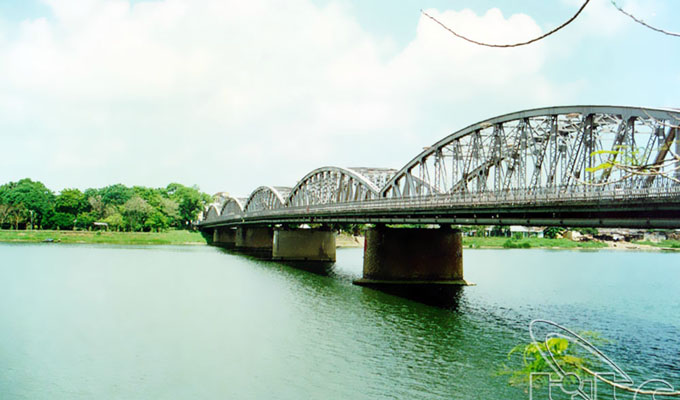
Huê ne serait pas la même sans la rivière Huong ou rivière des Parfums et le mont Ngu Binh, qui confèrent à l’ancienne cité des rois un cadre harmonieux et romantique. Une combinaison d’éléments indissociables que savent...
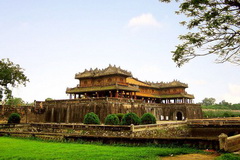
Elle sert d’entrée principale et de façade de la Cité Impériale. Construite en 1833 sous le règne de Minh Mang au moment du ré-aménagement de la Cité. La Porte du Midi constitue un ensemble d’architectures diversifié, elle...

The national park, extended in 2008, lies on a high mountain ridge that runs west-east from the Laotian border to the East Sea at the Hai Van pass. This ridge interrupts the coastal plain of Vietnam, and, therefore, forms a biogeographical boundary between the faunas and floras of northern and...
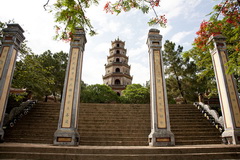
La pagode de la Dame céleste (en vietnamien: Chùa Thiên Mụ) est la pagode la plus haute du Viêt Nam avec les six étages supérieurs de sa tour, dénommée « Source de félicité ». Elle se trouve à Hué sur...
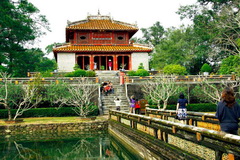
Le tombeau de Minh Mang est situé à l’extérieur de la ville, sur le mont Cam Ke, à 12 km de Hué, sur la rive ouest de la Rivière des Parfums.En avril 1840, le roi Minh Mang changea le nom du mont "Cam Ke" en mont "Hieu Son" et donna au futur tombeau...
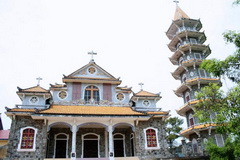
The Hermitage Bien Duc Thien An, usually name Thien Duc Hermitage, has been founded in Summer 1940 by the Bien Duc French hermits with the name of Thien An (Peace from Heaven).The hermitage is formerly managed as an infirmary and a school. To day the hermitage is only a place for religious...
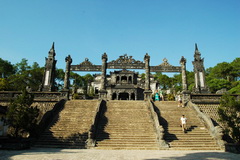
De tous les tombeaux impériaux qui jalonnent la rivière des Parfums, le mausolée de l’empereur Khai Dinh, l’avant-dernier souverain de la dynastie des Nguyên (1802-1945), est le plus étonnant, son architecture étant totalement différente...
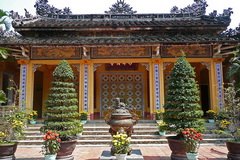
The pagoda includes a main sanctuary with two statues of the Deity Eight Vajra.Dieu De Pagoda was built by King Thieu Tri in 1844 on the platform of 5,000m² in his old residence, where he was born in 1807. It was constructed on a large scale, but was badly damaged during the successive wars....

Le temple de la Littérature est un temple confucéen du Viêt Nam, situé sur la rive gauche de la rivière des Parfums à un kilomètre de la pagode de la Dame céleste à l'ouest de la ville de Hué.Sous le règne des...

La rivière des Parfums (Sông Hương) tire son nom des nombreuses herbes médicinales qui poussaient sur ses rives. Nombreux villages de sampans avec leurs petits autels et les offrandes sur le toit, à l’intention des génies de l’eau. La...

Soyez le premier à connaître nos offres de voyage exclusives et les nouveaux circuits !.